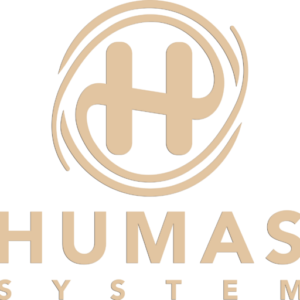HU‑Translator is a next-generation visual language where human energy becomes speech.
This article explores the roots of writing, the collapse of modern communication, and how HUMAS glyphs restore meaning, register contribution, and open access to an energy-based human economy.
HU‑Translator: Return to the Origin of the Sign
“When words were energy, and a sign was an action.”
Long before grammar and structured language, there were signs. A single image could express a complete thought, an intention, or a state. It didn’t describe — it was.
The first alphabet, as linguists note, did not emerge from abstraction. It was born from an attempt to capture meaning and the energy of the moment.
But with the rise of writing and spoken language, we began to lose the essence — intention. Words became shells, and signs turned into lifeless symbols.
Today, as digital communication becomes overloaded, distorted, and stripped of authenticity, we return to the origin: To the sign as a carrier of energy.
This is why HU‑Translator was born — a tool to speak once again through meaning, not just form.
Ancient Alphabets: From Image to Intention
The first alphabets were not created in study halls. They emerged from sensation — the need to express something beyond words: fear, faith, strength, home, fire, human, sky.
The Proto-Sinaitic script — considered a precursor to the Phoenician and Hebrew alphabets — used symbolic imagery: Aleph was the head of a bull, representing strength. Bet was the shape of a house, symbolizing shelter. Each character conveyed not just a name, but an energetic vector, rooted in body and culture.
In Chinese script, characters remain a hybrid of meaning and image — they don’t just signify, they embody. In religious and shamanic traditions across Africa, the Americas, and Siberia, a sign is an action, a magical knot, an energetic key.
In these alphabets, meaning is inseparable from the person. The sign reflected not only what the eye saw, but what the soul felt in contact with reality.
The Loss of Meaning in the Digital Age
Today’s world is saturated with words. Millions of messages, comments, posts, presentations… So many that they have lost their weight.
Language has become superficial. Words are detached from feeling. Communication is separated from understanding. Promises, terms, slogans — they all sound the same and carry no resonance. People have stopped hearing each other.
Algorithms amplify the noise. They prioritize engagement over truth, reaction over essence. Language has become a tool of manipulation, not connection.
The result: cognitive oversaturation. We read, but we don’t absorb. We speak, but we don’t connect. We lose the core.
HU‑Translator was born out of this crisis. Not to replace language, but to return to it — to its essence, its energy, its truth.
HU‑Translator: Returning to the Origin of the Sign
HU‑Translator is not just a visual language. It’s a system where energy becomes language.
Like in ancient times:
- One sign holds many meanings
- It’s not read — it’s felt
- It’s not spoken — it’s transmitted through state
We return to the essential: A person emits energy. Their contribution leaves a trace. That trace becomes a glyph.
Each HU‑Translator glyph is born from the person’s energy — from action, participation, emotion, and attention. It cannot be copied. It cannot be forged. It is a signature of essence.
This is a language without distortion: A space where you cannot fake. Where you feel — not guess. Where you connect — not perform.
How HU‑Translator Works — And Why It’s Not an Emoji
HU‑Translator is not a symbolic language, and it’s not a replacement for words. It’s not “like emojis,” and it’s not an add-on to messaging. It’s a language of state.
How it works:
- A person performs an action — physical, emotional, intellectual, or cognitive.
- The system analyzes the contribution: what was done and the level of energy involved.
- A glyph is generated — a visual sign carrying the encoded pattern of that contribution.
It is not chosen manually. It is generated from the energy of the action — and only that.
Example: You help someone with an important task — not for a reward, but from genuine intent. HU‑Translator reads your contribution: attention, presence, effort — and forms a glyph of gratitude and authentic engagement.
What makes HU‑Translator glyphs unique:
- They are impossible without participation. They are not a button — they are a trace.
- They are not static. The same person will receive different glyphs at different times.
- They serve as an energy-based passport — you carry not just a name, but a record of your contribution.
That’s why this is a new level of communication — where form is secondary to energy, meaning, and presence.
Why Do We Need a Language If We Have Tokens and Numbers?
Many ask: “If there are tokens, if contributions can be quantified — why do we need a language?” The answer is simple: Numbers express quantity, not essence. HU‑Translator communicates what cannot be captured in numbers.
Numbers can say:
- You contributed 3.2 HUNIT of physical energy.
- You earned 100 HUMAScoin for your participation.
A glyph can say:
- You were fully present.
- You acted with trust, not fear.
- You transmitted a state that inspired others.
It’s like the difference between a paycheck and genuine appreciation: One is recorded in a balance sheet, the other — in memory and connection.
HU‑Translator makes your contribution visible — not just to the system, but to people. You didn’t just “do a task” — you left a trace. And that trace is not a chart. It’s a glyph.
A glyph is a form of energy — one that can be carried, shown, and transmitted.
Why This Is Not Mysticism — But a New Level of Technology
HU‑Translator might seem mystical at first glance: “Glyphs, energy, contribution, states…” But this isn’t religion or esotericism. It’s a technology, built on measurable, structural principles:
1. Measurability
Every action in the system is analyzed through four types of human energy: Physical, Intellectual, Emotional, and Cognitive. It’s not about “auras” — it’s about effort, focus, presence.
2. Glyph Formation Algorithm
- Type of contribution
- Intensity
- Level of involvement
- Context (team or solo, conditions, environment)
3. Integration with DAO and Blockchain
A glyph can be attached to a transaction or a recorded action. It’s not just aesthetic — it’s proof of contribution. A glyph = not abstraction, but a parameterized unit of state.
This is what Web3 should become: Not just a record of actions — but the meaning behind them. Not just facts — but essence. And this isn’t philosophy — it’s a new architecture of trust.
Why Now Is the Time for HU‑Translator
The world is stuck in information overload. Every second — thousands of messages, posts, signals. But how much of it is real? How much carries meaning? How much transmits human energy rather than just words?
The problem:
- People don’t feel seen or heard.
- Meaning is distorted everywhere — in chats, comments, negotiations.
- We live in an era of noise, where value isn’t in words, but in the state behind them.
The solution:
HU‑Translator is the answer. It filters the noise and brings back clarity of presence. A glyph is not a symbol — it’s an intuitive, honest, non-manipulative transmission of meaning.
The world is shifting toward:
- Images replacing text
- Attention becoming the most valuable currency
- Authenticity becoming the new capital
HU‑Translator is not an option — it’s a necessary tool for the new era. It doesn’t replace language — it unfolds the human being behind the language.
HU‑Translator and the Economic Architecture of HUMAS System
HU‑Translator is not just a visual language. It is an interface into a new economy — an economy where human energy becomes an asset.
How it works:
- Every action is assessed across four types of energy: physical, intellectual, emotional, and cognitive.
- These inputs are converted into HUNIT — the unit of human energy (1 HUNIT ≈ 1 kWh of human effort).
- Through HU‑Translator, a glyph is generated, fixing the contribution. This becomes a recorded transaction within the system.
- HUNIT can then be converted into HUMAScoin, the internal currency backed by verified human energy.
- HUMAScoin is used to pay for services, products, and tools within HUMAS System.
What this gives us:
- Objectivity — energy is recorded without distortion
- Transparency — every contribution is visible
- New motivation — to be yourself is to have value
- DAO access — participation in decision-making based on contribution, not ownership
HU‑Translator is not just a translator of words. It is a translator of your true self into a world where your energy is your capital.

